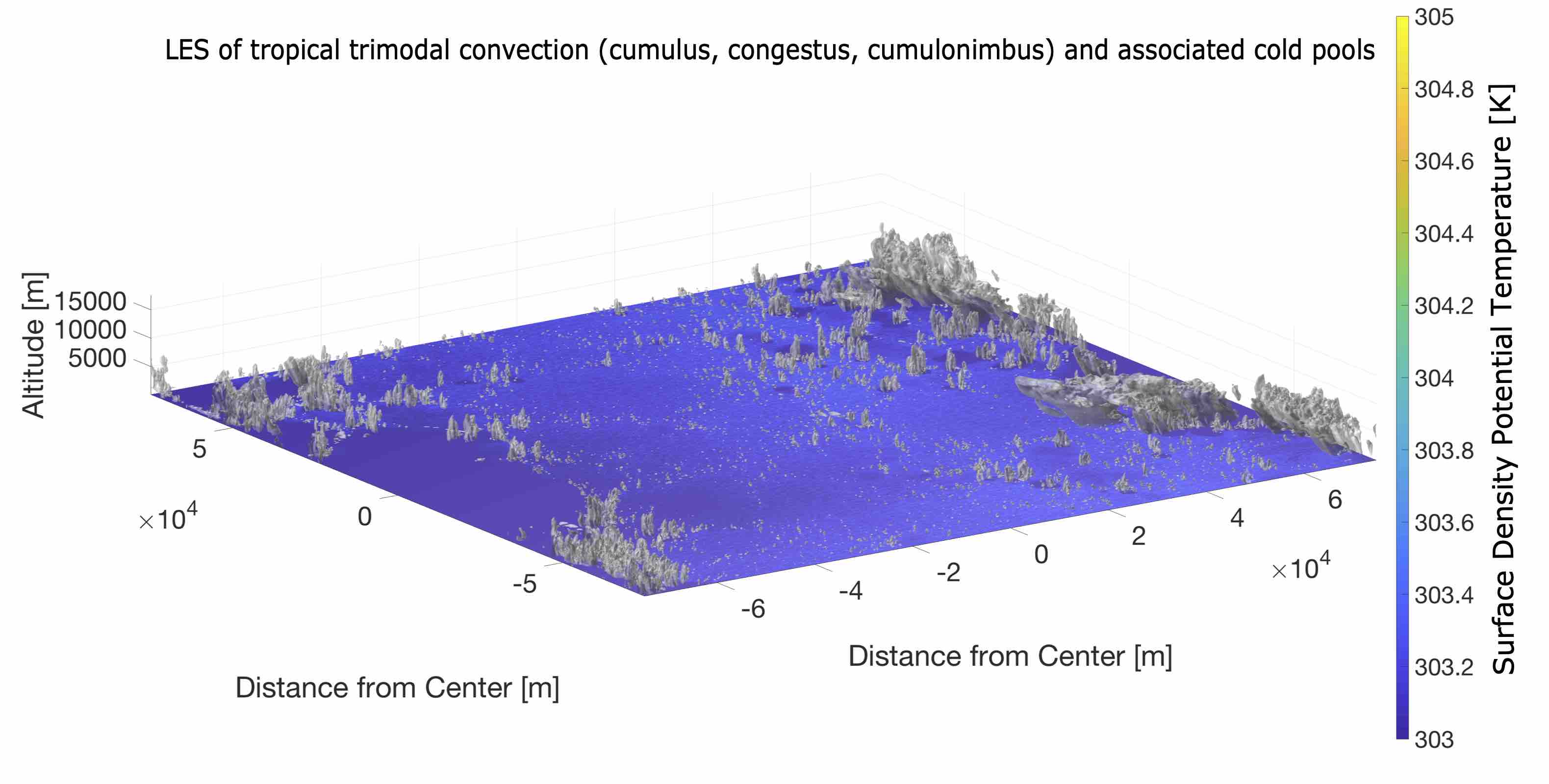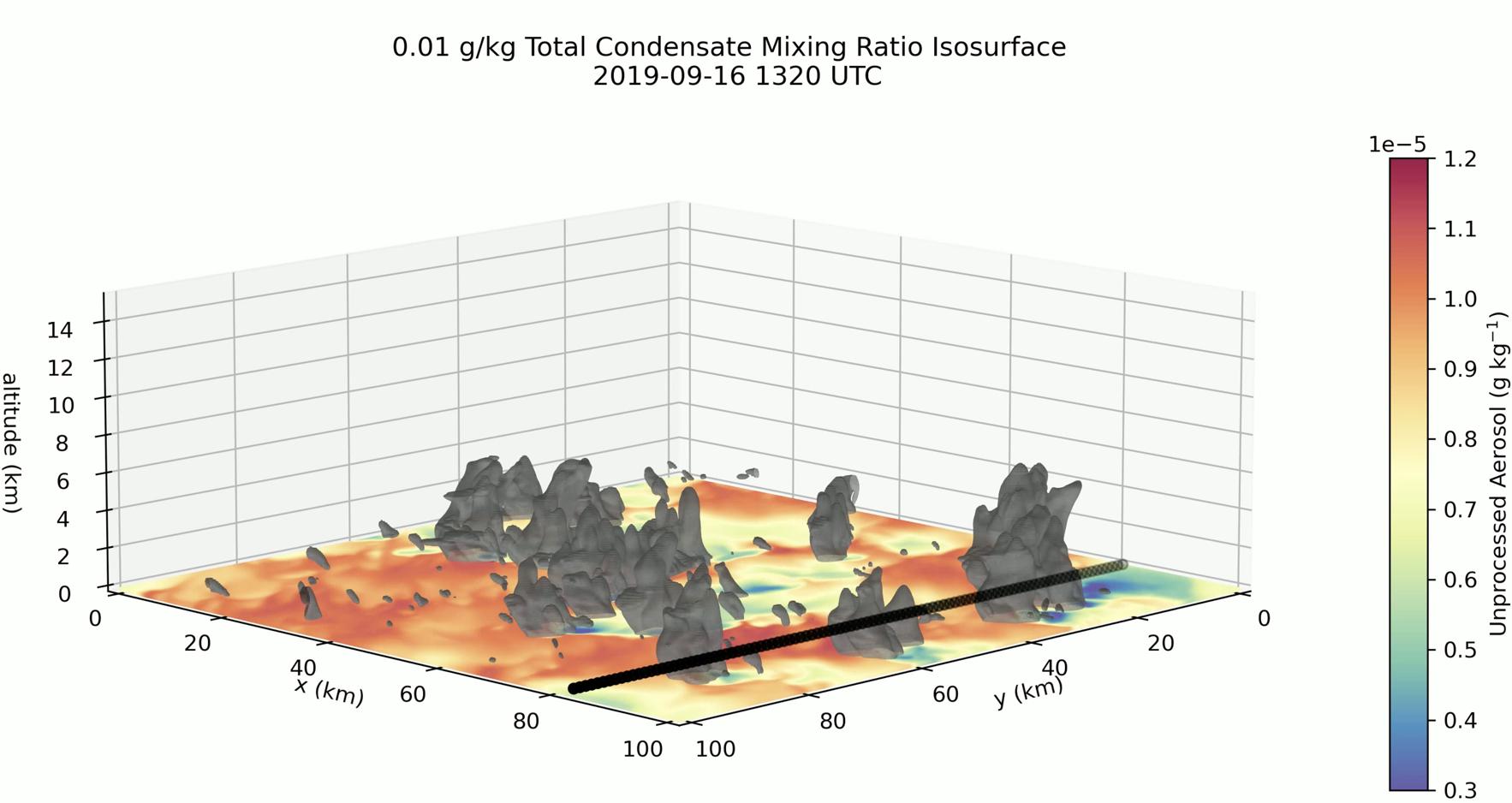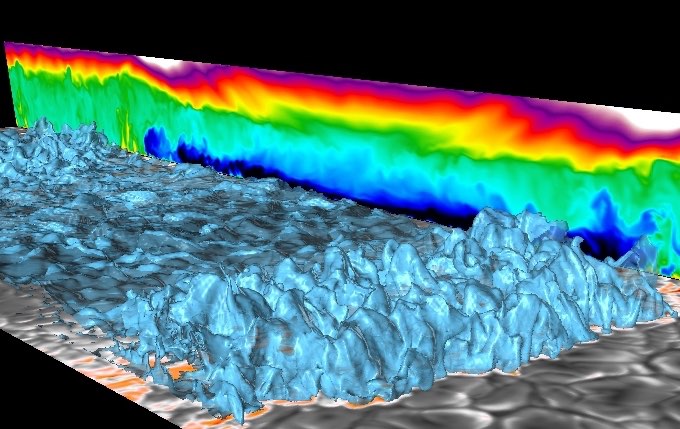Group Research Areas
Storm Dynamics
The van den Heever group researches several topics on cloud and storm dynamics, including processes in updrafts, downdrafts, cold pools, anvils, storm-environment interactions, and the interplay between storm dynamics and microphysics. Our numerical modeling work on storm-environment interactions has investigated diverse topics such as the impact of atmospheric dry layers on supercell morphology, the influence of the MJO and surface fluxes on convective morphology in the tropical West Pacific, the sensitivity of tropical squall line orientation to cold pools and vertical wind shear, and the impact of environmental and surface characteristics on the properties of sea breeze convection. We have also used satellite observations to understand the relationship between tropical convective morphology and various environmental properties. Convective updrafts are critical for transport of mass, water, energy, and pollutants within the troposphere, and play important roles in the generation of severe weather, precipitation production and flooding, and the global circulation. The van den Heever group made observations of High Plains supercell updrafts in the C3LOUD-Ex field campaign using radiosondes and radars. We have also used theoretical and numerical models to study dynamical processes in updrafts and their interactions with microphysical processes. These include the contributions to the vertical momentum equation across a suite of different models to assess differences in model updraft responses to aerosol loading; detrainment processes in cumulus congests clouds; convective invigoration by aerosols; and the mathematical relationship between condensation rates and the strength of deep convective updrafts. Understanding the flux of mass from updrafts into anvils is crucial for earth’s energy balance and upper troposphere humidification. The upcoming INCUS mission, led by Prof. van den Heever, will provide unprecedented observations of convective mass flux and its impact on convectively generated anvils.
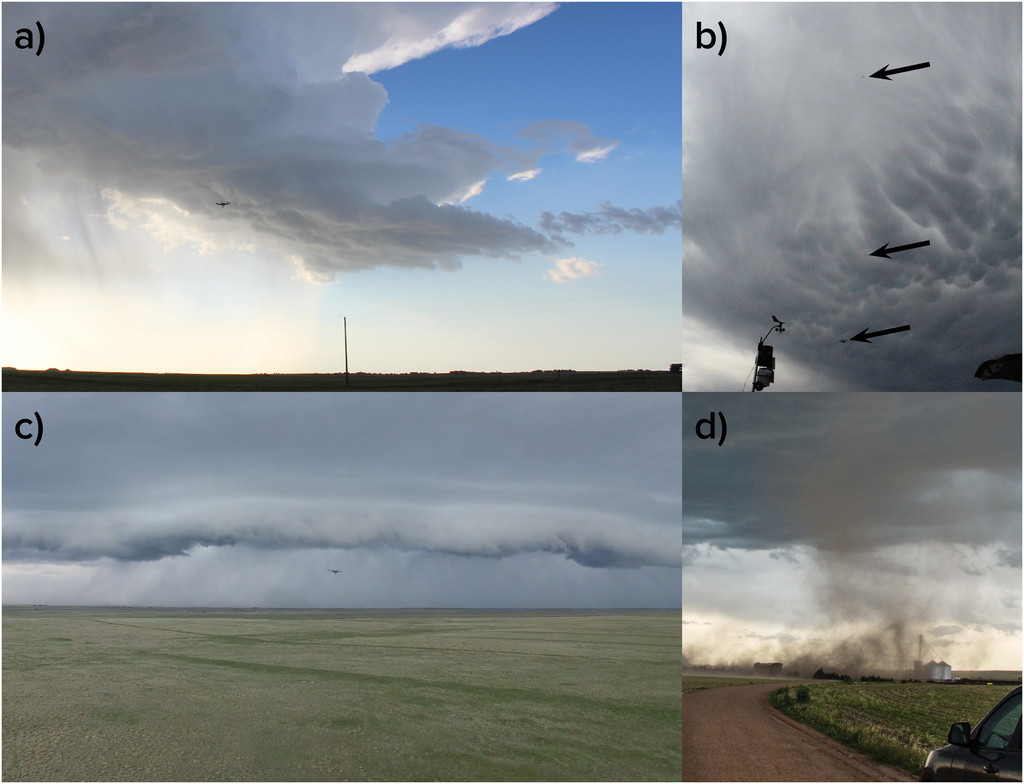
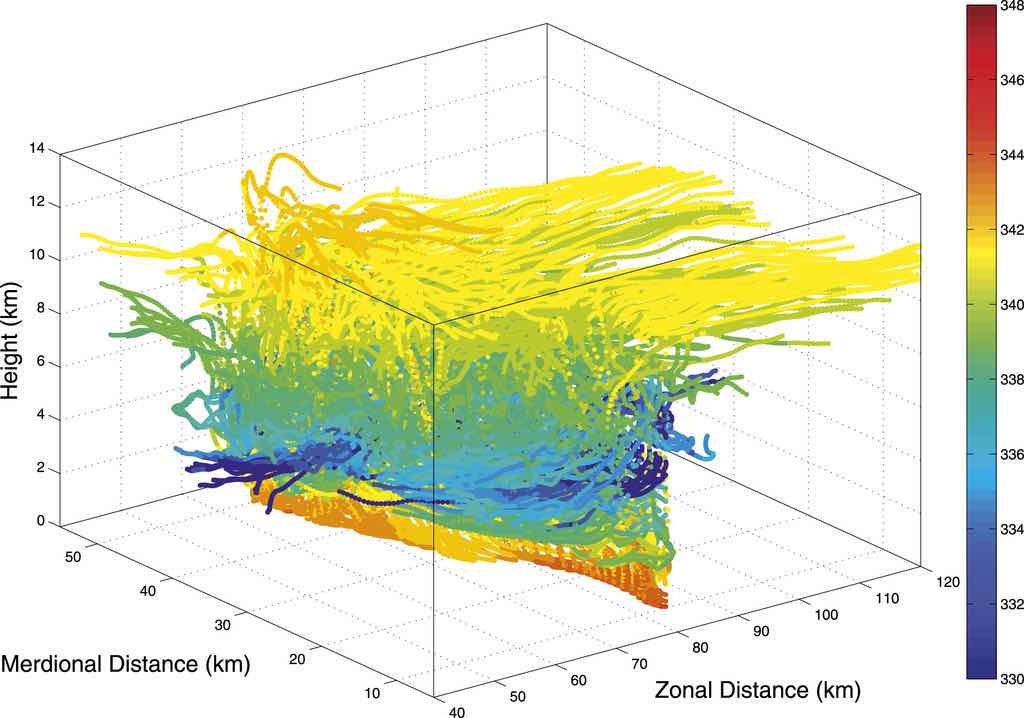
Microphysics
Large-scale cloud impacts on the climate system such as latent heating, precipitation, and radiative forcing are all modulated by processes happening on a microphysical scale. Processes such as how hydrometeors grow, form, and interact with one another can be difficult to observe directly, but are crucial to scientific understanding of clouds. The van den Heever group uses numerical modeling along with satellite and field campaign measurements to study cloud microphysics, with an emphasis on how these processes interact with cloud and storm dynamics. For example, some of our recent work has shown a strong linear relationship between updraft velocity and condensed water in deep convection. We have found that these microphysics-dynamics feedbacks are crucial to a wide range of topics including cold pool development, aerosol-cloud interactions, and convective transport. Our group is also responsible for the development and maintenance of RAMS, which has capabilities for both spectral bin microphysics and bin-emulating two-moment microphysics. Some of our past work has focused on how a priori modeling choices (such as the choice of bin versus bulk scheme, or assumptions about hydrometeor size distributions) influence the characteristics of simulated clouds and storms. This research provides insight both into potential improvements to RAMS as well as to cloud-resolving models more generally.
Aerosol
Atmospheric aerosols are microscopic particles (such as dust, sea salt, sulfates, and soot) that can absorb or scatter solar and thermal radiation, which directly impacts the Earth’s radiation budget. They can also act as nucleating particles upon which cloud droplets and ice crystals form, which indirectly impacts the radiation budget by changing the reflectivity, emissivity, and precipitation efficiency of clouds. Changes to the number concentration or amount of aerosol particles has the potential to alter both the radiation budget and precipitating cloud systems. The van den Heever research group has investigated the impacts of increased aerosol concentrations across a variety of weather systems including deep thunderstorms, shallow stratiform clouds, and dust storms. Investigations of aerosol radiative effects via simulated dust storms revealed varying impacts depending on the location and vertical extent of dust layers. Dust within the Saharan Air Layer tends to stabilize the mid-levels, inhibit convective development, and cool the surface. However, surface-based dust layers tend to exhibit competing effects whereby solar heating of the surface is reduced while in situ heating within the dust layer, via absorption, is increased and leads to locally neutral temperature effects. In shallow or stratiform clouds, storm dynamics are relatively weak and aerosol loading tends to suppress precipitation. In deep convection, increased aerosol concentrations have been found to delay the onset of precipitation by slowing the conversion of cloud water to rain drops. Furthermore, aerosol loading may invigorate the dynamics of convection, via latent heat release, and produce an increase in precipitation in spite of suppression of collision-coalescence droplet growth. A model intercomparison study of aerosol impacts on deep convection revealed consistent trends in the warm phase microphysical response to increased concentrations of aerosols, while the mixed-phase and ice-phase responses were highly variable among models. As such, comparisons between models and observations, with special attention to ice phase microphysics, remains a highly active area of research.
Cold Pools
Precipitation falling out of a convective storm latently cools air as it evaporates or melts. This latent cooling creates dense air which spreads out laterally along the surface and is referred to as a cold pool. The van den Heever group has conducted a plethora of research on cold pools. Some of our modeling work has investigated the impact of model resolution and surface fluxes on the dissipation of cold pools, created an algorithm to identify, track, and composite cold pools, explored the impact of cold pools in organizing tropical oceanic convection, looked at the feedbacks between cold pools and soil moisture, and examined how different parameters affect the odds of a cold pool collision initiating new convection. Dust storms created by cold pools are known as haboobs and are critical both for aerosol transport and because of the health and aviation risks they pose. The van den Heever group has investigated the impact of radiative effects and land surface properties in haboobs. The group has also led the C3LOUD-Ex field campaign and participated in the CAMP2Ex field campaign during which extensive observations of cold pools were conducted. We will make more observations of cold pools during the upcoming BACS field campaign!
